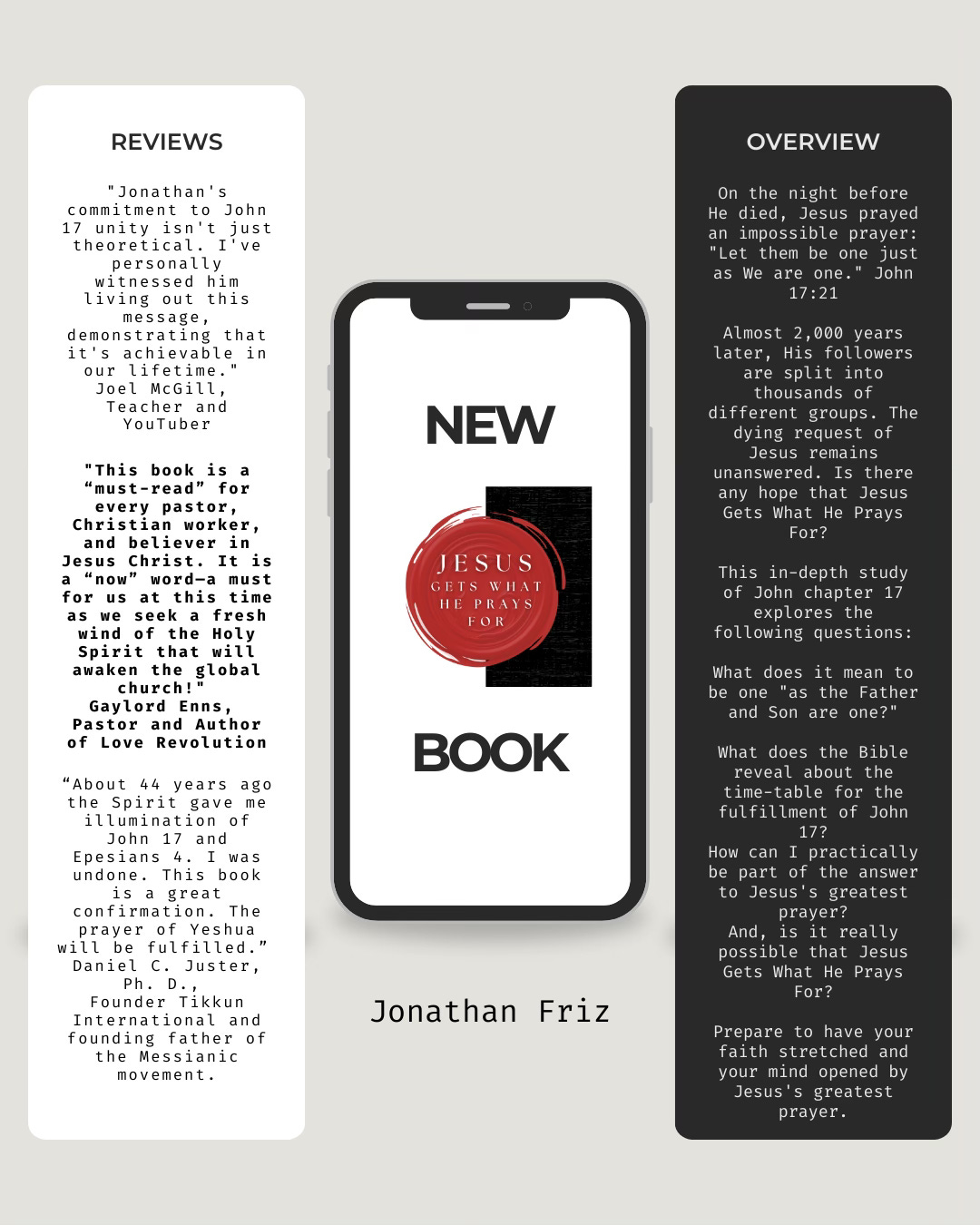Excerpt from Chapter 1 of Jonathan Friz’s NEW Book “Jesus Gets What He Prays For” now available on Barnes&Noble, Amazon, Thriftbooks, BAM! (Books A Million), and Walmart.
From Impossible to Normal
On January 1, 1901, the dawn of the twentieth century, no human being had ever flown. The testimony of thousands of years of recorded history was universally clear: powered flight is impossible. Pursuing it was vanity at best and probably madness.
The tenacious ingenuity of two bicycle-mechanic brothers and twelve seconds at Kitty Hawk changed everything. The gravity of thousands of years of human experience was not enough to hold them down.
For all of recorded human history, no one could fly. Today, human flight is so normal that it has become routinized, safe, and boring. What technological revolutions await us in the future, we may not know. However, as the story of the Wrights makes clear, realms of existence that were closed for the entire history of humanity can open quite suddenly.
What is impossible today may become tomorrow’s new normal.
John 17: The Impossible Prayer
John 17 is the longest prayer of Jesus recorded in the Bible. It’s our most in-depth, most intimate glimpse into His communication with His Father. It was spoken on the night He was betrayed, the night before His death, in His greatest moment of crisis.
The prayer has a main theme: “[Let them] be one just as we are one.”
After praying briefly for Himself (v. 1-5) Jesus turns His focus in prayer to His disciples, those who will carry His mission forward after He leaves. While He certainly has the apostles in the room in mind, He makes it clear in verse 20 that He is praying not only for those in the room, or for the first generation of believers, but “for those who will believe through their word.”
He is praying for His future followers, for us. “[Let them] be one just as we are one.”
The main theme of His prayer is repeated three times.
v. 11 “I am no longer going to be in the world; and yet they themselves are in the world, and I am coming to you. Holy Father, keep [guard] them in your name, the name which you have given me, so that they may be one just as we are.”
v. 20-21 “I am not asking on behalf of these alone, but also for those who believe in me through their word, that they may all be one; just as you, Father, are in me and I in you, that they also may be in us, so that the world may believe that you sent me.”
v. 22 “The glory which you have given me I also have given to them, so that they may be one, just as we are one.”12
The thrice-repeated theme reaches a crescendo in verse 23, whereJesus prays for a perfected or mature oneness among His followers:
“I in them and you in me, that they may be perfected in unity, so that the world may know that you sent me, and you loved them, just as you loved me.”
In Jesus’s longest prayer, He asks for something seemingly impossible:
“[Let my disciples] be one just as we are one.”
The Weight of the Prayer
The beginning of the gospel, John 1:1-3, describes how the Father and Son have existed in perfect unity from before the foundation of the world.
“In the beginning was the Word, and the Word was with God, and the Word was God. He was in the beginning with God. All things were made through him, and without him was not any thing made that was made.”
Before anything came into being, they were together in perfect communion. Everything in all creation springs from their union.
The Nicene Creed, the ancient statement of the Church that affirmed God’s Trinitarian nature, declares that the Father and Son, while distinct persons, are “of one substance [or being]” with one another. They have different “personhood” but the same “being.” The dynamic union between the Father and Son is the very substance that precedes, underlies, and sustains all that exists. Their union is so mysterious, intense, and intimate that we stretch language to its very limits to describe it: God is three persons with one being.
So that we don’t miss the weight of what Jesus is asking for, let’s translate Jesus’s prayer into slightly different language.
“Father, I ask that you cause the human beings I’ve called out of the world to be united together in the same way, to the same degree, and by the same means that I am united to you. Let them be one with us and with one another just as we are one.
Let’s spell it out even more:
“Let them be one in the same way that we are one. Just as we are distinct persons with one fundamental being, let them be one.”
“Let them be one to the same degree we are one. Let the fire of their union burn with the same divine intensity that has united us from before the foundation of the world.”
“Let them be one by the same means we are one. Let’s share the secret of our union with them, and catch them up in our fellowship.”
Jesus is asking for created, fallen, and cursed human beings to be one as God is one with God. This prayer, quite simply, should not be possible.
The believer who is not offended by Jesus’s prayer has not understood Jesus’s words. Human beings cannot be one as God is one with God, can they? Everything in our experience screams that this cannot be true. The prayer not only contradicts our experience, it also seems to offend sound theology and the holiness of God. If anyone other than Jesus were saying “let people be one as God is one,” we would consider it blasphemy. It sounds like a new-age heresy built on the oldest lie the devil ever told: that we can be like God.2
But this is Jesus. This prayer is Scripture. This is His heart cry to the Father before He goes to the cross.
Could it be that we are misinterpreting the prayer? Does it really mean what it seems to mean?







This book is so good!!